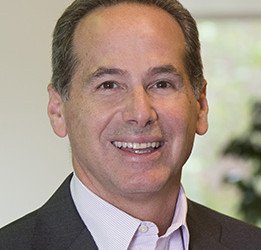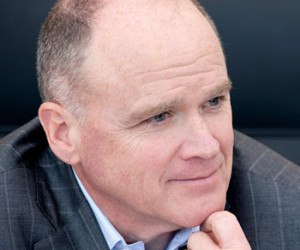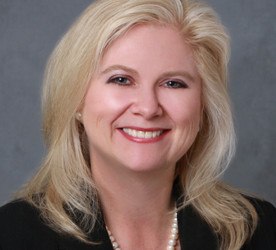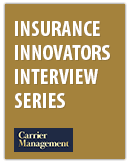Failing to innovate is not an option in the property/casualty insurance industry anymore, according to leaders who say that a tolerance for ill-timed or less-than-perfect product launches is better than the alternative—not making any risky innovative moves at all.
Carrier Management reached out to industry executives recently, asking them to respond to a series of questions about innovation efforts at their companies. Here five brave souls tackled our ninth question, which asked specifically about failures.
Q9: It is often said that tolerance for failure is one of the key cultural elements of a company in which innovation can thrive. Describe a failed initiative at your company and what you learned about innovation in the process.
- Q1: The greatest innovation in the P/C insurance industry
- Q2: Describe the greatest innovation at your company
- Q3: Innovation or innovator outside the insurance industry
- Q4: How your company encourages innovation
- Q5: The biggest obstacle to innovation within the insurance industry?
- Q6: The next innovation to impact the P/C insurance industry
- Q7: Your role in leading innovation.
- Q8: Best book you have read about innovation
- Q9: Describe a failed initiative at your company
- Q10: Collaborating with market competitors
- Q11: Can P/C insurers disrupt other industries?

Kelley (Ironshore): Innovation is not a qualifier for success. A company has to be prepared to fail in order to learn from mistakes. A corporate culture of innovation requires both resilience and persistence. The commitment to innovate cannot lose momentum when an idea becomes derailed. Absence of innovation, however, will most likely result in failure over the longer term.
Lightfoot (Guy Carpenter): Tolerance for failure is clearly important to innovation. What you learn from a failed experiment is often more important than what you derive from one that works. As an example, several years ago we built a model to evaluate the “riskiness” of portfolios subject to casualty-based catastrophe losses. We categorized portfolios as high, medium or low riskiness relative to other portfolios. However, this information didn’t resonate with our client base, as it was hard for our clients to develop risk management strategies on the riskiness level. They needed a quantification of the risk. As a result, in our GC ForCas model, we made sure that the model provides a credible estimation of potential loss from casualty catastrophes.

Colberg (Assurant): We launched an insurance bundle for the solar industry several years ago that incorporated property and liability insurance with warranty management. While the solar industry recognized the need for the product and warmly welcomed us into the marketplace, we quickly realized we had entered the market too early to generate the returns we required. It is critical to consider the timing for new market entries carefully, have a solid understanding of a market’s maturity and the best time to invest.
Watson (Argo): We had a great product that offered insurance for small business bank accounts. The coverage protected them against thefts via phishing, malware and other cyber attacks. In all aspects, it showed significant promise. But to have success in launching a product, even a winner takes a combination of innovations—in areas such as distribution techniques, marketing options, pricing, etc. We relied too heavily on some traditional methods in those areas when we introduced the product. In the end, the key takeaway for us was that innovation has to be part of the entire offering—not just the product.

Hendrick (XL Catlin): I can’t pinpoint a totally failed initiative. If we learned from it, we didn’t fail. While tolerance for failure is a key element for a company in which innovation can thrive, so is persistence and patience.
An innovative new product is not always an easy sell. It takes time for our brokers and clients to grow comfortable with a new approach or product. For instance, our CapAssure product that resulted out of our Competition 25 was not an overnight sensation. It took time to sell our first policies. What we’ve learned from that experience is to trust our instinct that we’ve built a high-value, useful product.
Success of a new product relies heavily on education and communication. And that takes time.
Read more innovation responses:
- Q1: The greatest innovation in the P/C insurance industry
- Q2: Describe the greatest innovation at your company
- Q3: Innovation or innovator outside the insurance industry
- Q4: How your company encourages innovation
- Q5: The biggest obstacle to innovation within the insurance industry?
- Q6: The next innovation to impact the P/C insurance industry
- Q7: Your role in leading innovation.
- Q8: Best book you have read about innovation
- Q9: Describe a failed initiative at your company
- Q10: Collaborating with market competitors
- Q11: Can P/C insurers disrupt other industries?
Click on the each executive to reveal their responses.
 Stanley A. Galanski, President and CEO, The Navigators Group, Inc.
Stanley A. Galanski, President and CEO, The Navigators Group, Inc. Mark E. Watson III, President and Chief Executive Officer, Argo Group International Holdings, Ltd.
Mark E. Watson III, President and Chief Executive Officer, Argo Group International Holdings, Ltd. Kevin H. Kelley, Chief Executive Officer, Ironshore Inc.
Kevin H. Kelley, Chief Executive Officer, Ironshore Inc. John Wurzler, President, OneBeacon Technology Insurance
John Wurzler, President, OneBeacon Technology Insurance Alan B. Colberg, President and Chief Executive Officer, Assurant, Inc.
Alan B. Colberg, President and Chief Executive Officer, Assurant, Inc. Manny Rios, President and CEO, American Modern Insurance Group
Manny Rios, President and CEO, American Modern Insurance Group Dave Pratt, General Manager, Usage-Based Insurance, Progressive
Dave Pratt, General Manager, Usage-Based Insurance, Progressive Berto Sciolla, EVP and Manager of North American Treaty Reinsurance,Gen Re
Berto Sciolla, EVP and Manager of North American Treaty Reinsurance,Gen Re Greg Hendrick, Chief Executive, Insurance, XL Catlin
Greg Hendrick, Chief Executive, Insurance, XL Catlin Anand Rao, Principal, PwC U.S. Advisory Practice
Anand Rao, Principal, PwC U.S. Advisory Practice Mike McGavick, Chief Executive Officer, XL Catlin
Mike McGavick, Chief Executive Officer, XL Catlin David M. Lightfoot, Managing Director, Head of GC Analytics – Americas, Guy Carpenter
David M. Lightfoot, Managing Director, Head of GC Analytics – Americas, Guy Carpenter Conan Ward, Chief Executive Officer, Hamilton USA
Conan Ward, Chief Executive Officer, Hamilton USA Ming Lee, Chief Executive Officer, AIR Worldwide
Ming Lee, Chief Executive Officer, AIR Worldwide Laura Hay, National Insurance Sector Leader, KPMG LLP
Laura Hay, National Insurance Sector Leader, KPMG LLP John Lupica, Vice Chairman, ACE Group; Chairman, Insurance–North America
John Lupica, Vice Chairman, ACE Group; Chairman, Insurance–North America
Get all 16 interview neatly packaged in a single PDF download. Explore ideas by personality and by question. More than 60 pages of content.






















 The Latest Launches from Allstate, WTW, Whisker Labs
The Latest Launches from Allstate, WTW, Whisker Labs  Viewpoint: Agentic AI Is Coming to Insurance Industry – Much Faster Than You Think
Viewpoint: Agentic AI Is Coming to Insurance Industry – Much Faster Than You Think  Hong Kong Fire Reveals Contractor Safety Breaches, Residents’ Revolt
Hong Kong Fire Reveals Contractor Safety Breaches, Residents’ Revolt  Best Quarter in a Quarter Century: S&P GMI U.S. P/C Q3 Analysis
Best Quarter in a Quarter Century: S&P GMI U.S. P/C Q3 Analysis 
